Parapinopsin, a novel catfish opsin localized to the parapineal organ, defines a new gene family
- PMID: 9334384
- PMCID: PMC6573767
- DOI: 10.1523/JNEUROSCI.17-21-08083.1997
Parapinopsin, a novel catfish opsin localized to the parapineal organ, defines a new gene family
Abstract
Multiple sites of extraretinal photoreception are present in vertebrates, but the molecular basis of extraretinal phototransduction is poorly understood. This study reports the cloning of the first opsin specifically expressed in the directly photosensitive pineal and parapineal of cold-blooded vertebrates. This opsin, identified in channel catfish and termed parapinopsin, defines a new gene family of vertebrate photopigments and is expressed in a majority of parapinealocytes and a subset of pineal photoreceptor cells. Parapinopsin shows a caudal-rostral gradient of expression within the pineal organ. This study also reports the cloning of partial cDNAs encoding the channel catfish orthologues of rhodopsin and the red cone pigment-the full complement of retinal opsins in the species. In situ hybridization studies using probes derived from these retinal opsins, together with parapinopsin, reveal no expression of retinal opsins in pineal and parapineal organ and no expression of any opsin tested in the "deep brain," iris, or dermal melanophores. These data imply that phototransduction in these sites of extraretinal photoreception must be mediated by novel opsins.
Figures
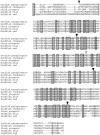
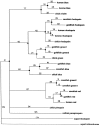

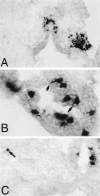
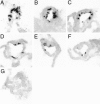


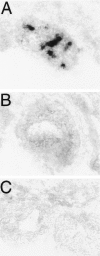

Similar articles
-
A novel rod-like opsin isolated from the extra-retinal photoreceptors of teleost fish.FEBS Lett. 2000 Feb 25;468(2-3):181-8. doi: 10.1016/s0014-5793(00)01217-5. FEBS Lett. 2000. PMID: 10692583
-
Pineal opsin: a nonvisual opsin expressed in chick pineal.Science. 1995 Mar 10;267(5203):1502-6. doi: 10.1126/science.7878470. Science. 1995. PMID: 7878470
-
Activation of Transducin by Bistable Pigment Parapinopsin in the Pineal Organ of Lower Vertebrates.PLoS One. 2015 Oct 22;10(10):e0141280. doi: 10.1371/journal.pone.0141280. eCollection 2015. PLoS One. 2015. PMID: 26492337 Free PMC article.
-
Nonvisual photoreceptors of the deep brain, pineal organs and retina.Histol Histopathol. 2002 Apr;17(2):555-90. doi: 10.14670/HH-17.555. Histol Histopathol. 2002. PMID: 11962759 Review.
-
Phototransduction cascade and circadian oscillator in chicken pineal gland.J Pineal Res. 1997 Apr;22(3):145-51. doi: 10.1111/j.1600-079x.1997.tb00316.x. J Pineal Res. 1997. PMID: 9213268 Review.
Cited by
-
Opsin transcripts of predatory diving beetles: a comparison of surface and subterranean photic niches.R Soc Open Sci. 2015 Jan 28;2(1):140386. doi: 10.1098/rsos.140386. eCollection 2015 Jan. R Soc Open Sci. 2015. PMID: 26064586 Free PMC article.
-
A pivot between helices V and VI near the retinal-binding site is necessary for activation in rhodopsins.J Biol Chem. 2010 Mar 5;285(10):7351-7. doi: 10.1074/jbc.M109.078709. Epub 2010 Jan 6. J Biol Chem. 2010. PMID: 20053991 Free PMC article.
-
Complement induction in spinal cord microglia results in anaphylatoxin C5a-mediated pain hypersensitivity.J Neurosci. 2007 Aug 8;27(32):8699-708. doi: 10.1523/JNEUROSCI.2018-07.2007. J Neurosci. 2007. PMID: 17687047 Free PMC article.
-
Circadian clock system in the pineal gland.Mol Neurobiol. 2002 Feb;25(1):19-30. doi: 10.1385/MN:25:1:019. Mol Neurobiol. 2002. PMID: 11890455 Review.
-
Deep Diversity: Extensive Variation in the Components of Complex Visual Systems across Animals.Cells. 2022 Dec 8;11(24):3966. doi: 10.3390/cells11243966. Cells. 2022. PMID: 36552730 Free PMC article. Review.
References
-
- Barr L. Photomechanical coupling in the vertebrate sphincter pupillae. CRC Crit Rev Neurosci. 1989;4:325–366. - PubMed
-
- Boni SG, Foster RG. A novel and ancient vertebrate opsin. FEBS Lett. 1997;406:279–283. - PubMed
-
- Cepko CL. The patterning and onset of opsin expression in vertebrate retina. Curr Opin Neurol. 1996;6:542–546. - PubMed
-
- Chang BSW, Crandall KA, Carulli JP, Hartl DL. Opsin phylogeny and evolution: a model for blue shifts in wavelength regulation. Mol Phylogenet Evol. 1995;4:31–43. - PubMed
-
- Chou W-H, Hall KJ, Wilson DB, Wideman CL, Townson SM, Chadwell LV, Britt SG. Identification of a novel Drosophila opsin reveals specific patterning of the R7 and R8 photoreceptor cells. Neuron. 1996;17:1101–1115. - PubMed
Publication types
MeSH terms
Substances
Associated data
- Actions
- Actions
- Actions
Grants and funding
LinkOut - more resources
Full Text Sources
Medical
